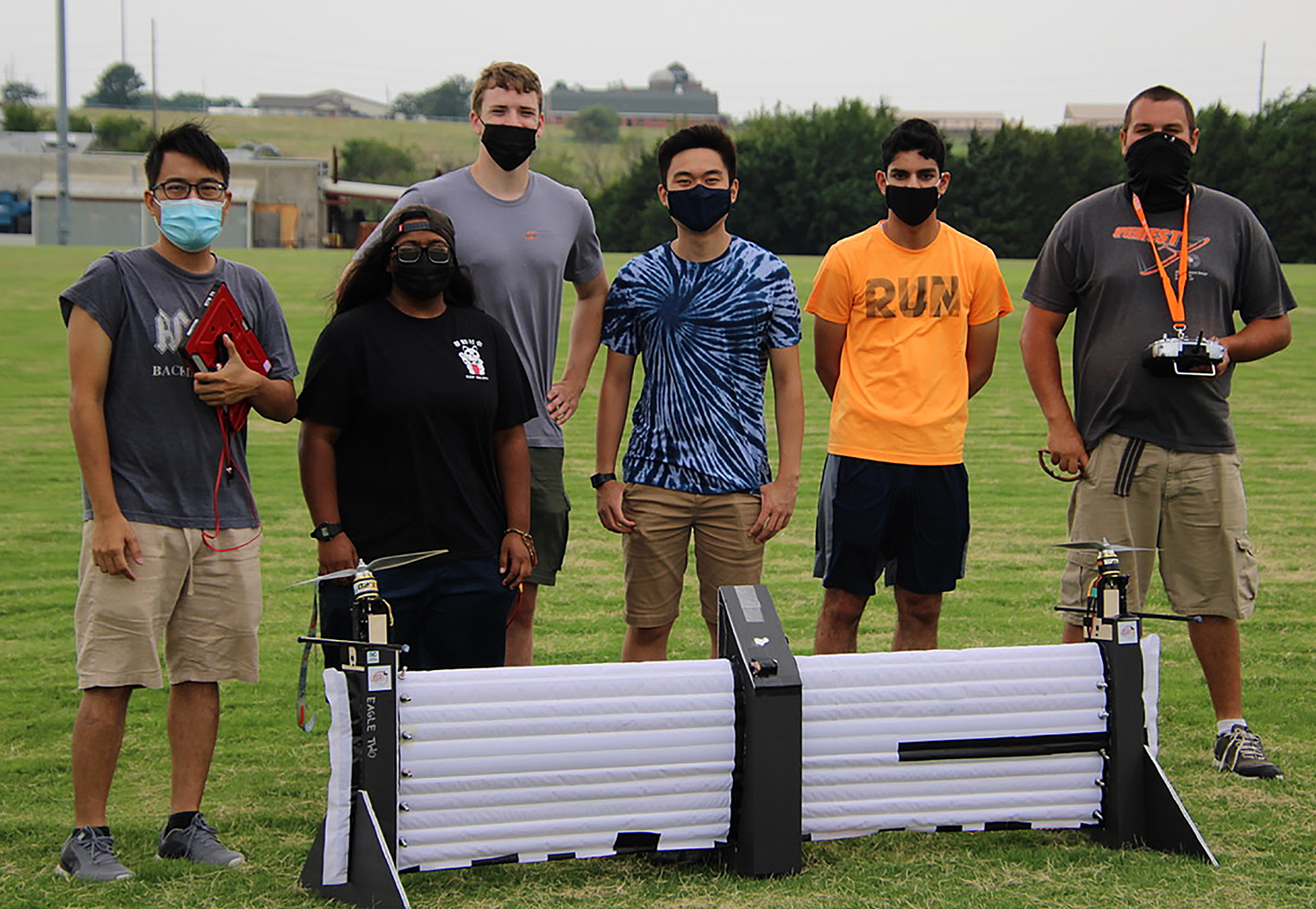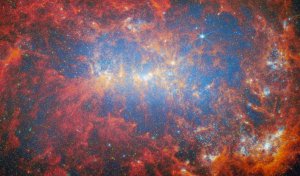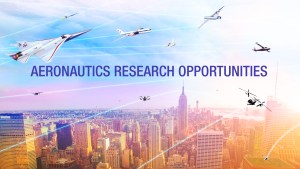
The aeronautical innovators of tomorrow are alive today and NASA’s University Leadership Initiative (ULI) is helping them realize their dreams.
Since ULI started in 2017 as part of NASA’s Transformative Aeronautics Concepts Program, universities across the country have competed to receive a grant from NASA allowing them to do research furthering our strategic thrusts.
The initiative gives university faculty and students alike an opportunity to work directly on NASA’s aeronautical research goals, providing students with valuable experience solving real-world technical challenges.
But some of the selected university teams have taken the idea even further on their own.
Inspired to pass the torch to the next generation, university faculty and students are including high schoolers in their ULI research, creating their own STEM outreach initiatives.
This outreach pays forward to teenagers with the same opportunity that universities received to be included and involved in NASA’s aeronautical research. The result: encouraging and educating those who someday will carry the fire.
Here are some of their stories.
Reaching Out
Marilyn Smith, a professor at Georgia Institute of Technology (Georgia Tech) and aerospace engineer, grew up in the southeastern United States.
Now working in the same region, she has just started a ULI activity investigating the use of advanced materials and new composites for use in drones and autonomous aircraft.
Though just receiving the ULI grant earlier this year, Smith has already felt a desire to reach out to kids in the rural southeast who may not have access to learning about STEM or pursuing a career in academia like she did.
“Many young people from the South are from rural or underrepresented backgrounds. They feel that they don’t have the grades or opportunity to go somewhere like Georgia Tech. It is important to be their role models and show them that they can do it,” Smith explained.
Additionally, some people in these rural areas face hardships affording a college education. Smith also hopes to convey her own struggle as a first-generation college attendee. “There are many ways to obtain a college education at Georgia Tech. We have resources to help them,” Smith said.
Smith connected with NASA’s Georgia Space Grant Consortium (GSGC), which has specific STEM demonstrations and initiatives. For example, the Science, Technology, and Engineering Preparation program helps high school students participate in a STEM project based in real engineering goals such as autonomy.
Using this model, Smith and GSGC are partnering with educators in Georgia’s rural communities to help students design and construct their own autonomous ground vehicles – directly including them in activities relating to Smith’s ULI on materials for autonomous aircraft and contributing to NASA’s Advanced Air Mobility mission.
Just as important as the STEM-related side of the outreach, Marilyn Smith will impart her inspiring message of believing in oneself and following one’s passions. “We have fun as engineers, and we want to show them that, as well,” Smith said.
Hands-on Activities
Jamey Jacob, a professor at Oklahoma State University and mechanical/aerospace engineer, began doing outreach by asking individual schools how he and his colleagues could help with STEM education in Oklahoma.
Modelled on these conversations came the Drone Scholars Program.
The Drone Scholars Program introduces students from Oklahoma and neighboring states to real-world aeronautical engineering challenges, including those addressed in Jacob’s ULI research into how Unmanned Aircraft Systems can help detect and operate in varying weather conditions.
This year, students will begin by building a replica of the Mars Ingenuity helicopter. Educators will then pose the challenge of a fixed-wing Mars aircraft that is foldable, deployable, and can fly in the unique atmosphere and weather of the Red Planet – all of which are concepts integral to Jacob’s ULI on weather environments.
“Students that apply and are accepted to the program learn about the real foundations of engineering and science: teamwork, building a relationship with other engineers and scientists, learning from them, collaborating, and accomplishing some common goal,” Jacob said.
Information provided in the students’ applications help the educators create a curriculum tailored to each group, building on the students’ skills and experiences, and providing them with the tools to gain hands-on experience.
Another cornerstone of the Drone Scholars Program is diversity, and this year Jacob is working with the Center for Sovereign Nations to include kids from Native American communities in Oklahoma, as well as other underrepresented groups.
When it comes to ULI and his outreach to younger students, Jacob is grateful.
“We’ve been lucky in having NASA scientists and engineers saying ‘hey, here is a challenge we have that would be great for younger students to work on.’ That way the kids know that this isn’t just a toy problem – it has real applications. They get to push the ball down the field a little bit and make a difference,” Jacob said.
To College – and Beyond
Letizia Moro of Boise, Idaho was in high school when she first came across ULI.
She was already intrigued with robotics when Hani Mehrpouyan, a professor at Boise State University and electrical/computer engineer, visited her school to do outreach.
Mehrpouyan’s outreach introduced Moro and her peers to the ULI he is involved with, led by David Matolak at the University of South Carolina, researching and evaluating techniques to improve how aircraft communicate between themselves and with the ground.
Moro showed great enthusiasm for the prompts and projects Mehrpouyan posed about autonomy and communications, soon beginning to dedicate more time to her own interest in these topics.
“I was excited about this field, but I didn’t know how to go about it. Hani supported my interests and gave me the resources to do it,” Moro said.
In one of the specific outreach activities Mehrpouyan brought to her school, aircraft were substituted with ground-based robots, and the high school students experimented with communication techniques.
In this activity, Moro came up with an original solution for a real-world challenge. One challenge faced in Air Traffic Management and Unmanned Aircraft Systems is determining each vehicle’s precise real-time location within their operating area.
“Letizia had the clever proposal to combine odometry with wireless signal networks to track where each vehicle has moved,” Mehrpouyan said. “When she proposed this, I wasn’t sure it would work. But she was adamant she wanted to move forward with the idea.”
Despite his initial reservations, Mehrpouyan gave Moro the tools and guidance needed for her research – and her idea ended up working. The two even co-authored a paper on the technology that was eventually peer-reviewed and published.
Now attending Boise State University, Letizia Moro has taken classes with Hani Mehrpouyan, who is continuing to be an advisor and mentor in her education and early career.
Just before college, however, Moro also achieved a NASA internship at NASA’s Glenn Research Center in Cleveland, albeit working remotely due to complications from the COVID-19 pandemic. Moro worked with NASA researchers on aircraft tracking and airport operations using machine learning and text recognition.
But one internship wasn’t enough – this summer, Moro has returned for another internship at NASA Glenn, picking up the same research where she left off in 2020.
These achievements are, in part, a result of the ULI-related outreach she was included in during high school. Now, thanks to her own passion and skills, Letizia Moro is endeavoring on a path of her own.
“I’m getting interested in more facets of the robotics field as well, such as vision-processing and electrical engineering. Having this experience with NASA has helped me achieve these new interests,” Moro said. “It helped me reaffirm early on that this is what I want to do.”
Onwards and Upwards
These are just some of the ULI participants who have done STEM outreach to kids based on their research. With every new round of ULI activities, the opportunities for NASA Aeronautics to inspire young people continue to increase.
Students like Letizia Moro and everyone else included in these outreach activities have the potential to be the next leaders in aeronautics research. Participating in real NASA activities can help lift them up, making a meaningful contribution not just to their careers, but also the future we dream of for travel in our skies.































